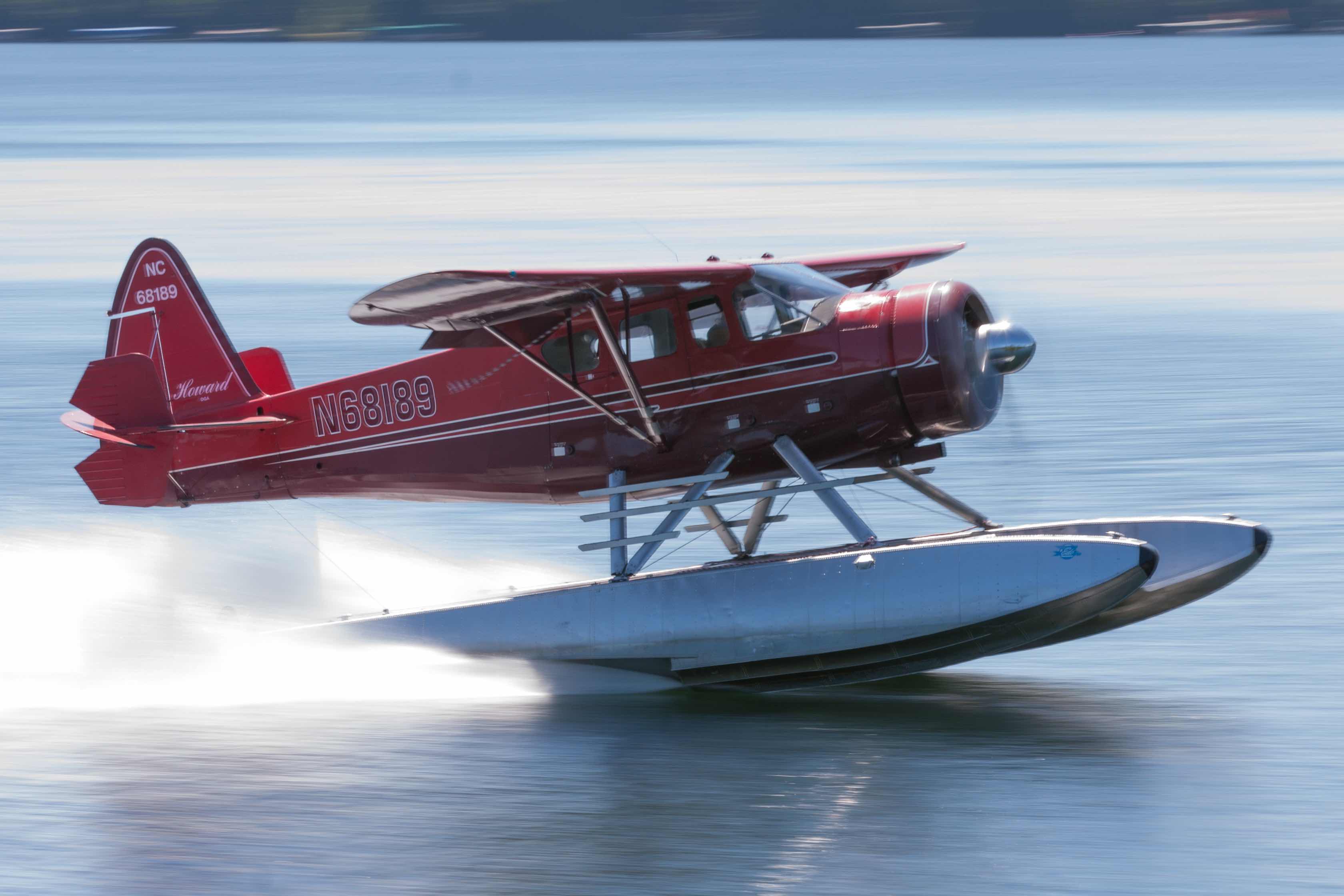DGA-15
Models -15J/W/P
Summary
The Howard DGA-15 was a single-engine civil aircraft produced in the United States by the Howard Aircraft Corporation from 1939 to 1944. After the United States' entry into World War II, it was built in large numbers for the United States Navy and also served various roles in the United States Army Air Forces.
| Wingspan: | 38'-0" |
| Length: | 25'-0" |
| Wing Area: | 210 sq ft |
| Empty Weight: | ~2700 lb |
| Gross Weight: | 4350 lb increased to 4500 lb |
| Seats: | Pilot + 4 passengers |
The Beginnings
 The Howard Aircraft Company (later Howard Aircraft Corporation) was formed in 1936 to build commercial derivatives of the Howard DGA-6 (named Mister Mulligan), a successful four-seat racing aircraft which had won both the Bendix and Thompson Trophies in 1935, the only aircraft ever to win both races. These successes did indeed bring the DGA series much attention, and Howard produced a series of closely related models differing mainly in the engine type, consisting of the DGA-7, -8, -9, -11 and -12. Offering high performance and being comprehensively equipped, despite a high purchase price, these became coveted aircraft owned by corporations, wealthy individuals, and movie stars, such as Wallace Beery, who was himself a pilot.
The Howard Aircraft Company (later Howard Aircraft Corporation) was formed in 1936 to build commercial derivatives of the Howard DGA-6 (named Mister Mulligan), a successful four-seat racing aircraft which had won both the Bendix and Thompson Trophies in 1935, the only aircraft ever to win both races. These successes did indeed bring the DGA series much attention, and Howard produced a series of closely related models differing mainly in the engine type, consisting of the DGA-7, -8, -9, -11 and -12. Offering high performance and being comprehensively equipped, despite a high purchase price, these became coveted aircraft owned by corporations, wealthy individuals, and movie stars, such as Wallace Beery, who was himself a pilot.
In 1939, the Howard Aircraft Corporation produced a new development of the basic design, the DGA-15. Like its predecessors, the DGA-15 was a single-engined high-winged monoplane with a wooden wing and a steel-tube-truss fuselage, but it was distinguished by a deeper and wider fuselage, allowing five people to be seated in comfort. It was available in several versions, differing in the engine fitted. The DGA-15P was powered by a Pratt & Whitney R-985 Wasp Junior radial engine, while the DGA-15J used a Jacobs L6MB and the DGA-15W a Wright R-760-E2 Whirlwind. In an era when airlines were flying Douglas DC-3s, the Howards cruising at 160 to 170 mph could match their speed, range and comfort with the rear seat leg room exceeding airline standards with limousine-like capaciousness, and high wing loading allowing the Howards to ride through most turbulence comfortably.
 World War II
World War II
Prior to the attack on Pearl Harbor in December 1941, about 80 DGA-8 through -15 aircraft had been built at the Howard Aircraft Corporation factory on the south side of Chicago Municipal Airport. With America's entry into World War II, most of the civilian Howards were commandeered by the military. The Army used them as officer transports and as air ambulances, with the designation UC-70. The Navy, in particular, much liked the aircraft and contracted Howard Aircraft Corporation to build hundreds of DGA-15Ps to its own specifications. They were used variously under several designations as an officers' utility transport (GH-1, GH-3), aerial ambulance (GH-2), and for instrument training (NH-1). A second factory was opened at Dupage County airport, west of Chicago, and about 520 DGA-15s were eventually completed.
After the War
In the post-war years, Howards DGA series were prized more for their utility than for their clean lines. Contemporary cabin aircraft have already become antiques, living pampered lives as show pieces rather than working aircraft. In the 1960s a modification was offered by the Jobmaster company of Renton, Washington, including additional seating, windows , and float installation making Howard DGA-15s attractive to bush operators. The large cabin proved popular with sky-divers as low-capital-outlay, low-operating-cost jumping platforms. With most of the working Howard DGAs retired from active commercial service, they have become popular as restoration subjects and as alternatives to more modern equivalents with higher cost of ownership.
, and float installation making Howard DGA-15s attractive to bush operators. The large cabin proved popular with sky-divers as low-capital-outlay, low-operating-cost jumping platforms. With most of the working Howard DGAs retired from active commercial service, they have become popular as restoration subjects and as alternatives to more modern equivalents with higher cost of ownership.
More than 50 of the Howard variants are still flying in the United States, mostly DGA-15s, with about 100 total remaining in the United States. Superb traveling airplanes with much better visibility, headroom, and shoulder room than some contemporary cabin aircraft, they have very long "legs" with a fuel capacity of 151 gallons in 3 belly-mounted tanks, giving an endurance of more than 7 hours, for a range, at normal cruise (140kt/155mph), of over 1,000 statute miles. With modern avionics, the Howard can compete in many respects with many contemporary light aircraft, due to its combination of room, comfort, speed, range and carrying capacity.